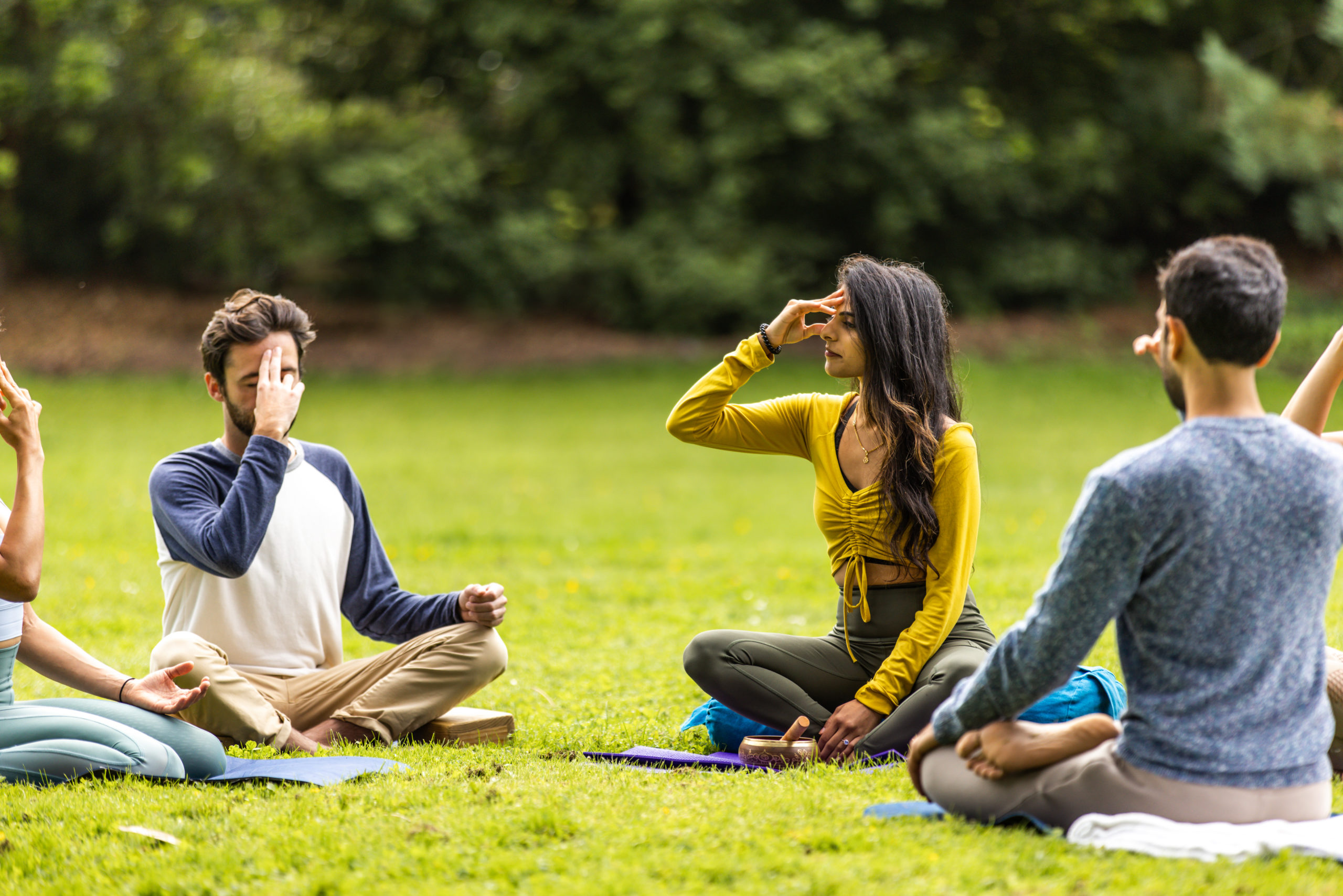Written by Meera Dhawan for her Blog, True To Yoga

Pranayama is the 4th stage of yoga as defined in the Eightfold Path in the Yoga Sutras of Patanjali. While we do not know exactly when the practice originated, scholars have dated it back as far as 2,000 years ago. With pranayama techniques we aim to consciously regulate breath through a variety of techniques. Mastery of the breath helps to still the mind and prepare for deeper meditation and later stages of the Eightfold Path.
What does it mean?
‘Prana’ means the breath of life, and ‘Ayama’ means the restrain or expand. Together pranayama gives up restraint and expansion of the breath or life force. According to B.K.S. Iyengar,
“The yogi’s life is not measured by the number of his days but by the number of his breaths. Therefore, he follows the proper rhythmic patterns of slow deep breathing. These patterns strengthen the respiratory system, sooth the nervous system craving. As desires & cravings diminish, the mind is set free and becomes a vehicle for concentration (1).”
The list of the benefits of pranayama is a long one that includes mental and physical aspects. You can check out a list of benefits backed by science for results from clinical studies.
Parts of the Breath
The breath is divided into 4 parts. Inhalation (puraka), retention of breath after inhaling (antara-khumbaka), exhalation (rechaka) & retention after the exhaling (bahya-khumbaka.
Any breath holding (khumbaka) of breath should not be practiced by beginners.
How I Practice
I’ve had some great teachers, read a lot of yoga texts and spent time developing my personal pranayama practice. Based on it, I follow the below guidelines when practicing.
Prepare
Find Stillness — Stillness is a critical element of pranayama. Before starting, use a technique such as candle gazing (tartkara) to still the eyes & mind.
Settle in & Find Balance — Make sure you are in a comfortable position. I recommend laying down, but if doing a technique that requires a seat, have a blanket or bolster under you and knees supported to the ground with blocks. This ensures that your spine is extended.
Close your eyes & relax — Observe how you feel in the mind, body & soul. Let the muscles in the face, neck, scalp, and jaw relax. Keep the eyes still & let them sink back.
Find Presence —Start by observing your regular breath as is. Is it shallow, deep, winding, etc.? Did it change as you observed it? Presence & mindfulness is another critical element of this practice.
Practice A Techniques
Try A Technique — To find the right techniques for you. Download my guide with a list of techniques, associated benefits and cautions. Not every technique is made for everyone, so make sure to read my caution section and consult a doctor if you have any serious medical conditions. I typically practice each technique for about 5–10 minutes, but this can vary.
Stay connected with your body — Make sure to stay in tune & check in with yourself throughout your practice. Keep the breath easy and avoid forcing it. Ask yourself, “Do I want to go further?” before adding counts to your breath. If the technique is difficult, change it or slow it down.
Wrap-up
Observe your breath again — After practicing your techniques return your breath to regular breathing and observe it. Take a moment to check in with yourself. Ask yourself, did this technique benefit me?
Journal—We can only develop our practice & techniques if we understand which ones effect us & how. This self-reflection is a critical element to this practice so write down what worked, what didn’t and how you felt before & after.
End — If you want a meditation practice add it after pranayama. After your practice, end in savasana.
Hope this helps you get started on your discover of this enchanting practice. As you continue to practice daily, you will gradually improve your practice so take it easy to begin with. Make sure to listen to your body, and keep your breath steady.
If you are interested in the benefits of Pranayama based on scientific clinical studies check out The Science of Pranayama and download a list of techniques below.

